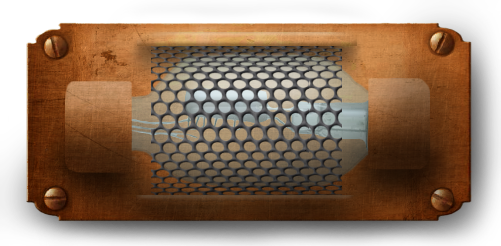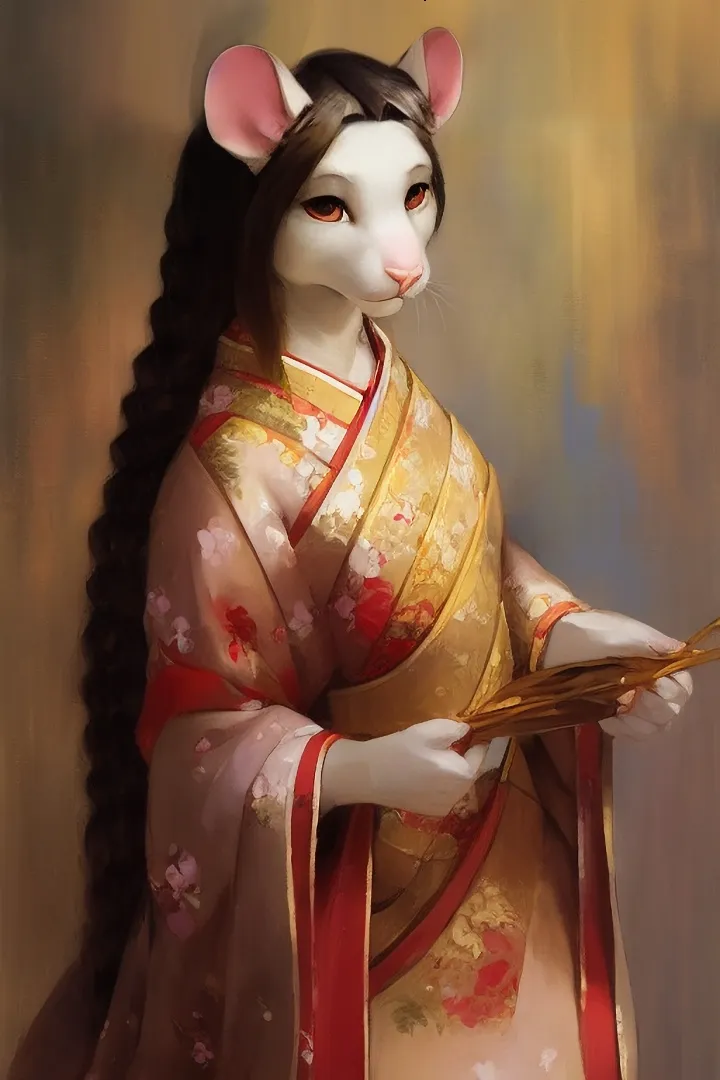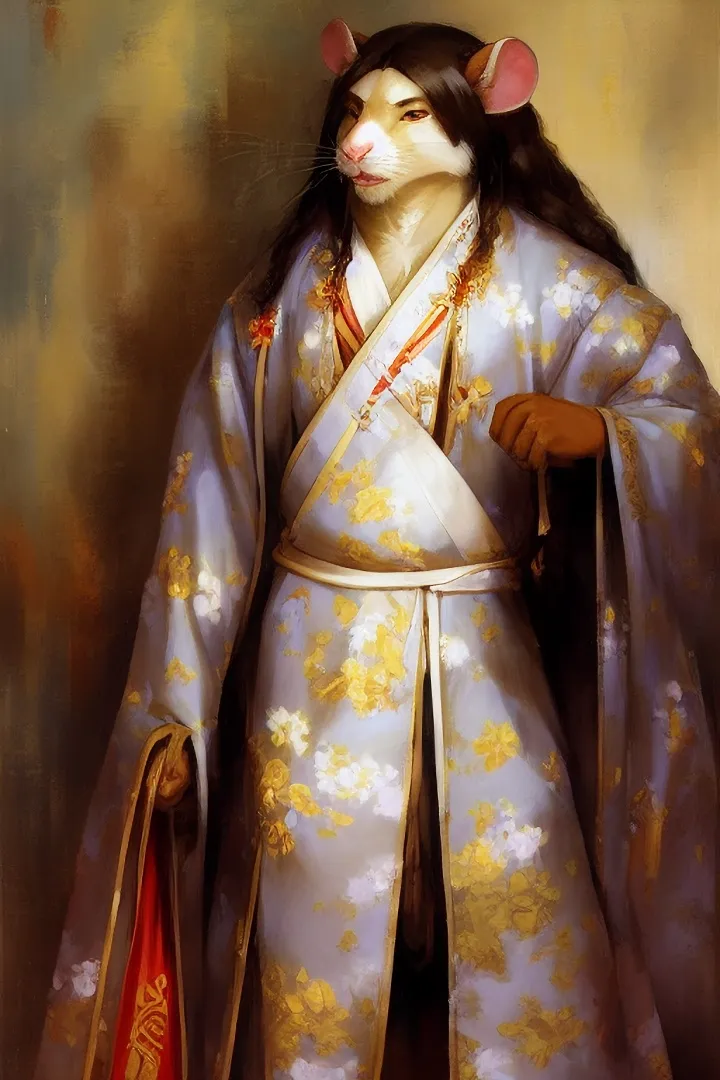The Rattu are an ancient people who date back to before the Irisian War. Unlike the majority of peoples who claim such a lengthy history, their existence has been well documented by other ancient species. The oldest remaining human records mention the Rattu as a mighty civilization weathering the early days of the Irisian War. Z̚oman murals and pictographs depicting the Rattu have been discovered dating back nearly five thousand years. Earlier records may exist but are as of yet lost to us.
The Rattu themselves claim to be nearly ten thousand years old as a species, and just over five thousand years old as a people. This distinction is important to them, for they began life as monstrous creatures. The Z̚oman are well known to have been pursuing the secrets of creation and life, producing many intelligent creatures possessing personhood. The Rattu were one of their earliest of experiments, and did not emerge as truly intelligent beings but as savage and primal brutes.
The Rattu, able to live long, healthy lives on their own and not remotely dangerous to their creators, were released into the wilds to live as they would. Such was the Z̚oman's policy regarding their creations. Over nearly five thousand years, the Rattu developed and grew on their own, gaining their present physical form, intellect, and general behaviors though little more than an act of will and a desire for the things their creators had.
The Rattu know their ancestors were exalted by the Z̚oman for this accomplishment, and were given the land called the Salt Warrens as a homeland upon their civilization's creation of enchanted fertilizer. Sadly, much of their history was lost when the Irisian war devastated their people. Their cities were crushed and buried, most of their people butchered, and their technological feats, body of knowledge, and accomplishments were buried under ash, stone, and blood. The war reset them to the age of stone and sticks, as it did all others who survived the war.
The Rattu rebuilt as best they could, but faced great challenges in their early years. The Salt Warrens were overrun with monstrous creatures following the end of the Irisian War, and remained very dangerous until the year 258 (Sylvin Calendar). The Rattu will to survive was strong, and the Rattu who survived the end of the war, the start of the new world, and the first few centuries of reconstruction developed the ability to tap into their ancestors' more bestial and monstrous forms at will. At first, such barbarism was seen as merely a means of survival. Still, over the centuries, this physical transformation became enshrined as a martial art, and more recently as an essential physical skill for performing laborious or dangerous tasks of any kind. Their evolved and refined forms have likewise become the shape they wear for more civilized and social affairs.
Personality
The Rattu are an introspective people. They greatly value self improvement, from the point of view of the community as part of the self. Should a conflict arise within their community, they do not blame the individuals but rather see the incident as an unfortunate accident. All parties to the accident are expected to engage in a full and formal assessment of the incident. This assessment will be used to rewrite social protocols, evaluate individuals for behavioral changes, and otherwise be the core of a rigorous adjustment to the status quo with the intent to prevent future conflicts. This is not only the case for issues such as a home collapsing, a smith being unable to complete an order on time, and a magistrate failing to achieve a stated political goal, but also day-to-day interpersonal issues.
This way of thinking is very alien to most peoples, and is critical to understanding the Rattu. To them, such events are inevitable, almost pre-ordained. Emotion shouldn't factor into them, rather such happenings are meant to be handled with cold logic.
From this one would expect a similar treatment to external conflicts. In a word, no. It's almost as if the bottled up emotions from day to day internal conflicts are shaken up and uncorked in the direction of external problems. If a Rattu village is raided, the Rattu will never calmly assess the situation and take measures to improve their defenses. They get mad. They'll find a most expeditious and disproportionate way to get the bandits back.
"Chyo ve been s̺ûku̽chyà. Æ lis̺àchû gu̹vâ veyu̹, s̺û vî veyu̹qiqu. Gi menû! Chyo don t ma u̹ beku̽ veyu̹. Dæ kû rîchu ku̽lû chyo vî chyu̽ du̽?! Lûs̺u̽ û chyobe lis̺à bààko. Vî lis̺à rue kû mæha ro s̺ûku̽chû ro bâku̽ vâ dî veyu̹. Di kû moyu̹ mechyhanichy û mûchyâzû gû gis̺à veyu̹ kâmû do moræ lis̺à s mârà dûbà!"
— Ancient Rattu Proverb, attributed to Holy Philosopher Trîg̈g̈ Shënhê
Aprox. Translation: When life is sour, use the sour things to fule your revenge.
Aside from this way of thinking, the Rattu are most human in their thought processes and general traits. Rattu have an intrinsic need to be a part of a group, preferably a large community. This need is compounded by their desire to be highly respected within the affirmation community if they cannot be the most revered within it. Consequently, rattu constantly make small communities within larger communities and seek out new communities. This is both a form of self-gratification and a deep seeded belief that if they had power, they could make life better for everyone.
Rattu inherently want to make their own standing in the world better, and there is no better way to do this in their eyes than to be the one in charge of their tribe. Regardless of what a rattu does, they do it because they believe it will ultimately help others. At their core, no matter how misguided, no matter how uneducated, or misinformed, regardless of their specific beliefs, a rattu does what they do under the belief that ultimately it will help others or put them in a position to help others.
The primary difference between the rattu and human mindsets coming from the previously mentioned emphasis on remaining detached from emotion when dealing with interpersonal issues within the "tribe", and going well beyond what most humans would consider reasonable emotional ranges when dealing with both external conflicts, and external benefits.
Rattu are incredibly enthusiastic and operate at high levels of emotion outside their families and rattu dominated groups. This is not an instance of putting on a social mask, but rather one of taking the mask off. Most rattu feel they are not allowed to be themselves with groups they live with, as this could harm their odds of being appointed to a position of power. Anything seen by their peers as illogical or inappropriate damages their reputation. This not being the case amongst members of other species, other communities aside from those in which a rattu holds ambitions, and especially when in foreign territories, rattu feel free to express themselves to the full extent of their personalities and will consistently refuse to dampen their emotions in such circumstances.
Physical Description
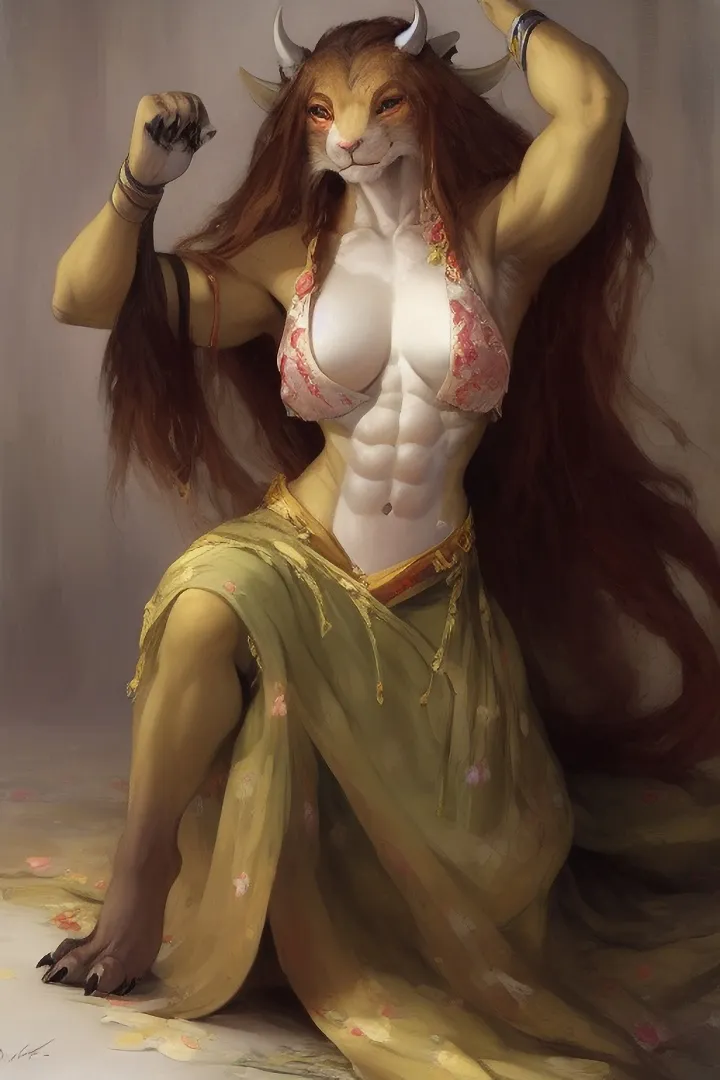
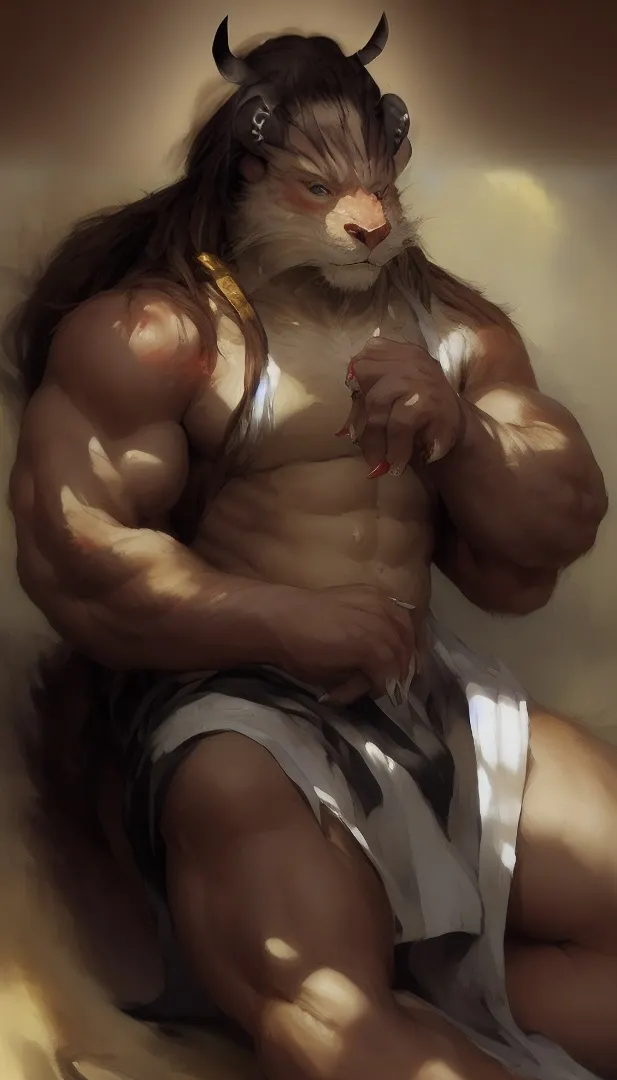
"Our people have come to see one's shape as immaterial, fleeting, and largely unimportant. The Goblins have a similar philosophy they shape their flesh to fill the mould their soul has formed. A respectable way of being, but not for us. The circumstances of one's birth are irrelevant, it is what we do that defines us by dictating who we become."
— Bàvirî Lomebàbu̹so (Heavenly Warlord) Trgêrí Trënhêpî IV
In their Hûàgî form (/hʊˈəgɪː/ [hoo-a-gii] Suran for "Purified"), also known as their base form or civilized form, the Rattu are most simply described as humanoid rats who fall neatly into the Beastfolk category with other species created by the Z̚oman's experimentation on animal life. They stand on two digitigrade legs ending in dainty paws tipped with tiny nails, maintain their balance in part with a long sinuous and hairless tail on a body that is otherwise covered in fur. Aside from those traits, they look remarkably like what might happen should a human child decide to draw their pet Rattus norvegicus domestica (fancy rat) as a member of the family.
Their proportions and body shape are remarkably human, as are their general features aside from those previously mentioned as well as their face and ears. Their face is that of a rat, complete with a muzzle and topped with large round rodent ears. Yet their eyes are remarkably human, shining with intelligence and emotion. Their lips, while capable of opening quite wide should they wish, remain narrow and almost entirely closed when speaking, almost as if their mouth only covers the last eighth of their muzzle. (Scholar's Note: This illusion is shattered should they elect to shout, feel the need to bite something or someone due to agressions, or yawn.)
The Rattu Hûàgî form is notably short (averaging 160 cm or 5'2"), slender in build, and exceptionally light (65.74 kg or 144 lbs). It is capable of incredible feats of dexterity and remarkably graceful, if somewhat fragile.
In their Qimî form ( /ˈqimɪː/ [kee-mei] Suran for "monster/beast/demon"), also known as their war form, the Rattu are best described as a humanoid creature with a generally rat-like appearance. Some feline features (primarily face structure) can be observed in their general appearance in this state as well, though these are coincidental and point to the Rattu's animal ancestors as being Neotoma lepida (the desert woodrat, a species now extinct in Eyom due to the fortification of the continent following the Irisian War.).
The Qimî form is horrned, with females possess two small conical horns jutting outwards on their temples, and male possessing longer curled horns in the same location, albeit they point forwards rather than up. Their jaws are rimmed with longer beard-like whiskers which are tough and thick enough to protect the throat from most animal attacks, and even capable of stopping slashes from duller knives. The Rattu's ears are reduced in size in this form, often disappearing into their hair, which grows thicker and longer, offering similar protection to their "beards". Their fur notably remains much the same, staying soft, supple, and silky in texture. However, their fur lays flat, hugging their form to emphasize their musculature (an intimidation tactic found in many preditors within the Salt Warrens) and also serves to wick moisture away from their skin and to the ground, both enhancing cooling efficiency and more strongly saturating their territory with their scent. Their claws thicken and elongate, becoming remarkably efficient natural weapons while allowing most of their normal range of hand motions.
The most notable aspect of their transformation is the change in size and general mass. The transformation draws on arcane energy, creating real and permanent tissues (which are dissolved back into energy when the Rattu chooses to change back). The end result of this manifestation is a substantially taller (213 cm or 7'0") and heavier (148 kg or 328 lbs) individual with a bulky well-built build. The transformation exchanges dexterity and grace for power, durability, and speed.
In either form, Rattu are sexually dimorphic, with females being notably larger than males as well as having a more curvaceous body type. Female Rattu have two permanent breasts, and develop an additional four breasts when nursing their children. In rare cases, the additional breasts may remain at substantially reduced sizes post pregnancy (this is usually "fixed" by the Rattu having another litter and thereby restarting the natural process by which they are removed). Male Rattu are notable for their general oder, which is fairly strong (though not unpleasant to most species) and smells of vanilla, sandalwood, and cinnamon.
Rattu reproduce in litters of six to twelve, though not every female Rattu is fertile. Their fertility rate is roughly even with the average litter size, resulting in most Rattu families having one fertile female per generation, who will have children one or two times, and give most of her offspring to her siblings to raise. Reproductively viable Rattu females are known for wearing pink ribbons tied into heart shaped bows on their tails, or braids.
Relations
THe rattu have an interesting relationship with the majority of Eyom's peoples. They are seen as both highly aggressive, and highly civilized. Many see them as barbarians with excellent masks, while just as many see them as the pinnacle of civilization that has learned when and how to apply barbarism. The truth lies somewhere in between.
The rattu are blood enemies of the Wood Elves for daring to intrude upon the Rattu's blood-kin the Kitsune and Tanuki, with whom they form the tri-people culture known as the Wareneese. The attempts at conquest are something the rattu cannot forgive, and have sworn to fight the Wood Elves to extinction. This blood oath is so strongly rooted that many rattu magically enforce the oath upon themselves, and in times when the two cultures are not at war will enguage in acts of banditry and terrorism against Wood Elves wherever they be.
This warlike nature extends to other groups from time to time, particularly when the Gnolliosh States decide to put a toe over the Wareneese's bordors
The rattu are one of the premier arms dealers in Eyom, producing most of the finest weapons, and all of the greatest enchantments for personal arms and armor. As the inventors of the firearm, they are feared and respected by most cultures. This fear is dampened by the rattu's love of fine arts, philosophy of perfecting everything one does in their daily life, and otherwise working to refine all aspects of one's being and their culture with them.
In short, they are difficult to judge, holding many positives and negatives.
Unless you are a dwarf, in which case they are wonderful because they help dig holes in mountains and make good explosives and explosive delivery mechanisums.
Settlements
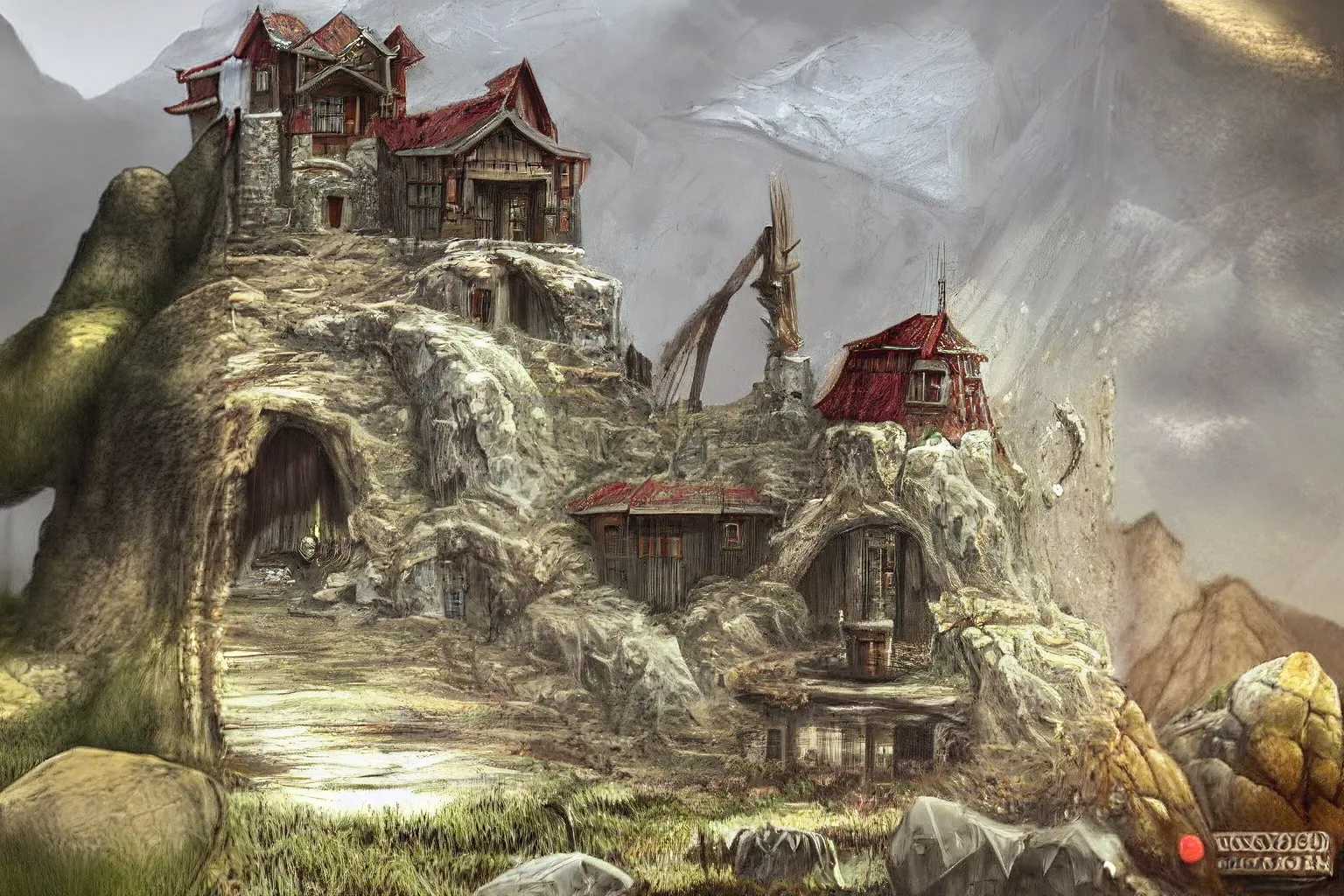
Rattu are notable for preferring to live within the outermost layers of the earth. Their cities and homes are thus dug out from the earth, with the removed materials being used to create sufficient structures to facilitate living within the area. These include covered entryways for their burrows, walls, storerooms for surface-related supplies, guard posts, trade hubs, pathways, and similar structures.
The burrows themselves are well made, be they queried from stone, or made by packing earth. While ostensibly a hole on the ground, no one in their right mind would refer to a rattu home as such. Their floors are clad with finely polished wood or stone, their walls are decorated as any would decorate their homes, and all rooms are furnished with the fine carpentry products the rattu produce. The most notable difference between rattu homes and the homes of other species is a lack of windows within them.
The rattu construct windows on the surface floors of their structures, and thus the majority of their dwellings do no have windows, which they see as security flaws which are necessary for determining if it is safe to go outside.
The rattu are notorious tunnelers, and consequently rattu communities have subterranean passages linking all neighbors to each other via hub-dens, which serve as a hybrid between common rooms and public squares. This puts the majority of all rattu civilization underground, which makes them feel safe and cozy.
Alignment
Rattu have a very strong sense of justice and fairness which is very much focused on the group rather than the individual. They feel, deep down, that there must be rules, and that the rules must be fair, balanced, and equally applicable to all. Unless of course, there is an exception. Rattu love their exceptions. Their society is almost entirely describable as a short list of sensible rules drowning in a bottomless well of asterisks. There are devils who have gone mad attempting to fit into rattu society (Phistophilus Devils cannot tell what is so difficult for their kin about this.).
At the same time, rattu believe in a greater good. A weak, pathetic, loathsome greater good that's incapable of doing its job. So pathetic and sustainable is this greater good that they will step up and show it how to do its job properly. Then take that greater good's job because by the Seven's taint-fur, that greater good is a piece of trash that dosn't deserve such a noble and lofty job. There are celestials who find the rattu's drive to make a greater good for all a reality terrifying at times (Solar who have met a rattu have no idea what their kindred's problem with the rattu is.)
Adventurers
Many rattu are driven to adventure not only out of a sense that they should be out in the world making it a better place (Usually by exterminating wood elves, Iruslife, aberrations, and general scum-of-the-earth), but also just to get away from their homes for a while and "find themselves" as the rattu put it. Most rattu spend a few years of their youth questing in the wider world, writing that which is wrong, rescuing damsels in distress, and placing those who distress damsels in disproportionately greater distress.

